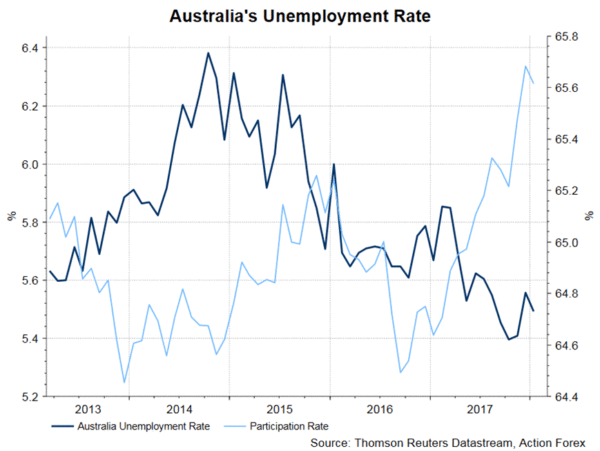As widely anticipated, RBA left the policy rate unchanged at 1.5% in March. A cooling property market signals that further rate hike is less urgent. On top of the central bank’s agenda has returned to boosting inflation and employment. In 2017, Australia’s CPI averaged at 1.9% while the unemployment rate picked up to 5.5% in January from 5.4% in October 2017. Meanwhile, wage growth remained low while US looming imposition of trade tariffs on metals might affect Aussie economy which relies heavily on exports of raw materials.
As suggested in the accompanying statement, RBA indicated that inflation is “likely to remain low for some time reflecting low growth in labour costs and strong competition in retailing. A gradual pick-up in inflation is, however, expected as the economy strengthens. The central forecast is for inflation to be a bit above 2% in 2018”.
The central bank remained confident over the employment situation. It acknowledged that “employment has been rising in all states and has been accompanied by a significant rise in labour force participation”. Going forward, growth on the job market should remain “solid” with “a further gradual reduction in the unemployment rate expected”. Same as many other advanced economies, wage growth has remained a concern. RBA was aware of the soft wage growth and expected it would “continue for a while yet, although the stronger economy should see some lift in wage growth over time”. It added that “the rate of wage growth appears to have troughed and there are reports that some employers are finding it more difficult to hire workers with the necessary skills”.
The housing market is less a concern as “the housing markets in Sydney and Melbourne have slowed”. Policymakers added that the macro-prudential policies “have been helpful in containing the build-up of risk in household balance sheets, although the level of household debt remains high”.
The language on the exchange rate was unchanged from the previous month. with AUDUSD modestly lower during the inter-meeting period, policymakers should be less worried about the tightening effect of a strong Aussie on the economy.
On the monetary policy outlook, the central bank reiterated the stance that the current accommodative policy should be appropriate to support economic growth. The market has priced in no chance of a rate hike for the rest of the year.
Link to the source of information: www.actionforex.com


 Signal2forex.com - Best Forex robots and signals
Signal2forex.com - Best Forex robots and signals




